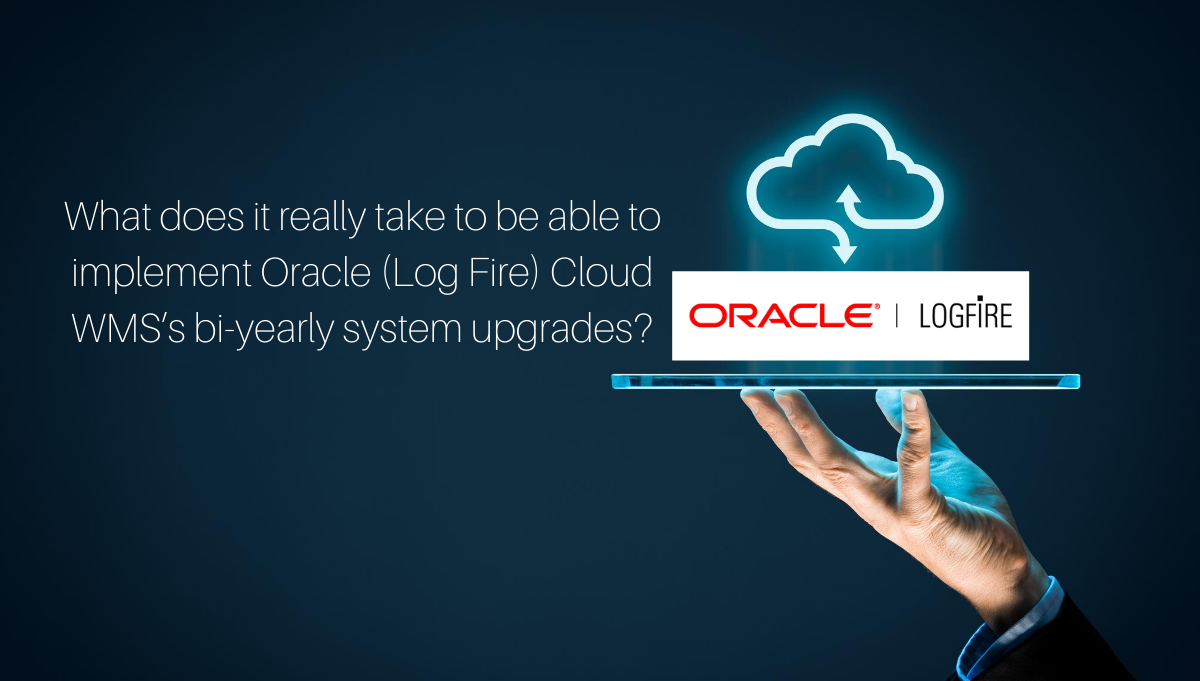Industry leaders across the world are adopting cloud-based supply chain solutions to save on capital expenditure, manage business scalability, and improve system integration visibility. Research finds that 51% of businesses are already in the cloud. But are they getting the most benefit out of their existing systems?

Data and system maintenance is a continuous process for business effectiveness. Cloud-based systems provide an additional avenue for increased system potential, environment upgrades, and feature improvements. After the implementation of Oracle Cloud WMS, Oracle services or the services partner will hand over the project to the internal support team. Even though the design phase is over, Oracle continues to release patches for new functionalities and bug fixes. It’s now the in house team’s responsibility to take advantage of those fixes.
Most companies shy away from this because of the challenges of owning the operation flows, solution design, configurations, planning schedules and regression testing. So, what does it really take to be able to implement Oracle Cloud WMS’s bi-yearly system upgrades?
1.Validate Oracle Release Notes
Review the Oracle release documents and identify beneficial features for your business. Not every company needs a system upgrade, but you’ll want to take advantage of any useful features that will increase your operational efficiency. Understanding your end to end business scenarios, your existing Oracle WMS solution, and system touchpoints are important for making this decision.
2.Request Patch Deployment
After committing to a system upgrade, you will need to schedule deployment to your Test/QA environment via My Oracle Support (MOS). Every environment has its own maintenance window, so that should be considered with your upgrade request. Generally, it takes a week between your request and the actual deployment. Scheduling your system upgrade is just as important as the upgrade itself. You should keep in mind that PROD deployment can only happen 1-2 weeks after its been deployed to your test environment.
3.Regression Test Plan
Regression plans are utilized to test all the features of your software system in a consistent, repeatable format. Businesses should have all their business flows documented and ready to run in their TEST/QA environments. When performed correctly, a business will capture any bugs or system errors created by the new upgrade. These should be reported to MOS promptly with as much detailed as possible. Regression tests will prevent critical flaws from bringing down your production system and guarantee that your newest features work as intended.
4.Revise Original Design and Enable New Configuration
After validating your business flows you can begin configuring your new features. It’s worth nothing that some new features may make parts of your old design obsolete. You’ll need to incrementally configure these changes while verifying process integrity. After validating the system upgrade, documenting your new changes, and providing training to relevant employees, you can upgrade your PRODUCTION environment.
5. Production Deployment
Once satisfied with the new release and QA test results, the PRODUCTION upgrade can be deployed. Another upgrade ticket will need to be submitted to MOS and so your environment can be upgraded in 1-2 weeks. Your new configuration will need to be applied again in your PRODUCTION environment. (This should be done outside of business hours.) Once finalized, your new system is ready to go and you can resume operations.
AUTOMATION IS YOUR ANSWER
To combat this upgrade hurdles and save on IT cost, ITOrizon offers DevOps services which encapsulate dedicated team who has in-depth knowledge on Oracle WMS(LogFire) Application, regression automation and edge for cloud solutions support. Automation Platform reduces regression time exponentially and prevents manual errors from zero to none.
ITOrizon is the only oracle partner with proprietary automation platform(TUNA) to automate all oracle cloud solutions. ITOrizon have predefined templates for Oracle WMS Application which means no selenium coding needed.
ORACLE CLOUD (LOG FIRE) WMS AUTOMATION
ITOrizon Oracle practice have elaborate experience in designing level 5 fully automated warehouse and integrating them with Oracle Transportation Solutions (OTM), Global Trade Management(GTM) and NetSuite ERP.
Engage with ITOrizon to discuss about our DevOps services and see the demo of our automation platform of Oracle WMS.

